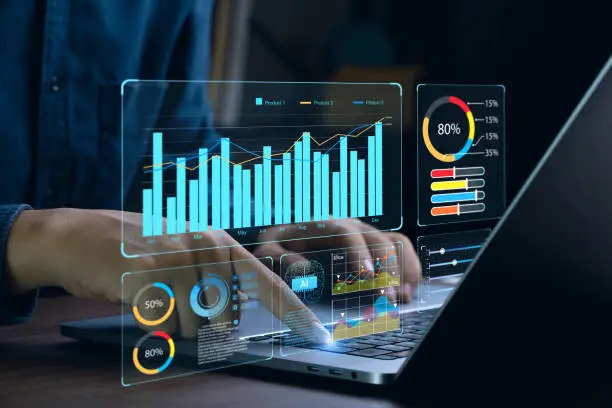Table of Contents
Data tools in the digital age have revolutionized information understanding, facilitating discovery and breakthroughs by streamlining data processing, analysis, and visualization across various fields.
Understanding Data Tools: A Brief Overview
Data tools are software and applications that manage, analyze, and visualize data, simplifying complex processes and revealing patterns. They are essential in fields like scientific research, business analytics, and healthcare, and their popularity has grown due to the exponential increase in ‘Big Data’. Understanding these tools is crucial for maximizing data potential.
Types of Data Tools: From Spreadsheets to AI
Data tools are categorized into basic spreadsheets like Microsoft Excel and Google Sheets, database management systems like MySQL and Oracle, advanced statistical analysis tools like SAS, R, and Python, and Business Intelligence (BI) tools like Tableau and Power BI. AI-driven tools, using machine learning algorithms, have emerged to predict trends and automate decision-making processes. Each tool has its unique strengths and can be chosen based on the user’s specific needs.
The Role of Data Tools in Scientific Research
In scientific research, data tools are pivotal. Researchers often deal with massive and complex datasets that need to be accurately analyzed and interpreted. Data tools enable scientists to perform sophisticated analyses that would be impossible manually. Programs like MATLAB and SPSS are extensively used for statistical analysis while specialized tools like Bioinformatics software help analyze genetic data. Furthermore, visualization tools help researchers present their findings in more understandable and impactful ways, aiding peer review and publication processes. These tools not only speed up research but also increase the accuracy and reliability of results, paving the way for significant scientific discoveries and innovations.
Business Analytics: Driving Decisions with Data
In the business world, data tools play a critical role in decision-making. Companies use BI tools like Tableau, Power BI, and Qlik to visualize large datasets and uncover insights that inform strategic decisions. Customer Relationship Management (CRM) systems like Salesforce collect and analyze customer data to help businesses improve their services and marketing strategies. Predictive analytics tools use historical data to forecast future trends, helping companies to stay ahead of the competition. Additionally, data tools facilitate better risk management by analyzing potential threats and opportunities in the market. By leveraging these tools, businesses can make more informed decisions, enhance efficiency, and ultimately achieve better outcomes.
Healthcare: Improving Outcomes with Data
Data tools have a transformative impact on healthcare, improving patient outcomes and operational efficiency. Electronic Health Records (EHR) systems like Epic and Cerner store and manage patient information digitally, making data easily accessible for healthcare providers. Data analytics tools help in analyzing patient data to identify trends and improve diagnosis and treatment plans. Predictive analytics can forecast disease outbreaks and patient needs, aiding in proactive care. Additionally, AI-driven tools are being used for imaging and diagnostics, offering highly accurate analyses and reducing human error. By integrating these tools, healthcare providers can offer more personalized and effective treatments, streamline operations, and reduce costs.
Education: Enhancing Learning Through Data
In the education sector, data tools are increasingly being used to enhance learning experiences and outcomes. Learning Management Systems (LMS) like Moodle and Canvas collect data on student performance and engagement, helping educators to tailor instruction to individual needs. Data analytics can identify at-risk students and allow for targeted interventions before issues escalate. Visualization tools help present complex information in more understandable formats, making learning more engaging and effective. Furthermore, predictive analytics can forecast future trends in educational needs and resource requirements. By using data tools, educators can improve teaching strategies, enhance student engagement, and ultimately achieve better educational outcomes.
Future Trends: The Evolution of Data Tools
The landscape of data tools is constantly evolving, driven by advances in technology and growing data needs. Artificial Intelligence and Machine Learning are becoming integral parts of data tools, offering predictive analytics and automation capabilities that were previously unimaginable. The rise of cloud computing is making data tools more accessible and scalable, allowing for the processing of larger datasets with greater efficiency. Data privacy and security are also becoming paramount, leading to the development of tools with enhanced data protection features. As these trends continue, data tools will become even more powerful and indispensable, fueling further discoveries and breakthroughs across all fields.
In conclusion, data tools are essential in navigating the complex universe of information we live in today. They offer immense potential for driving discoveries, improving decision-making, and enhancing outcomes in various domains. The continuous evolution of these tools promises an exciting future, where data-driven insights will undoubtedly lead to monumental advancements.

